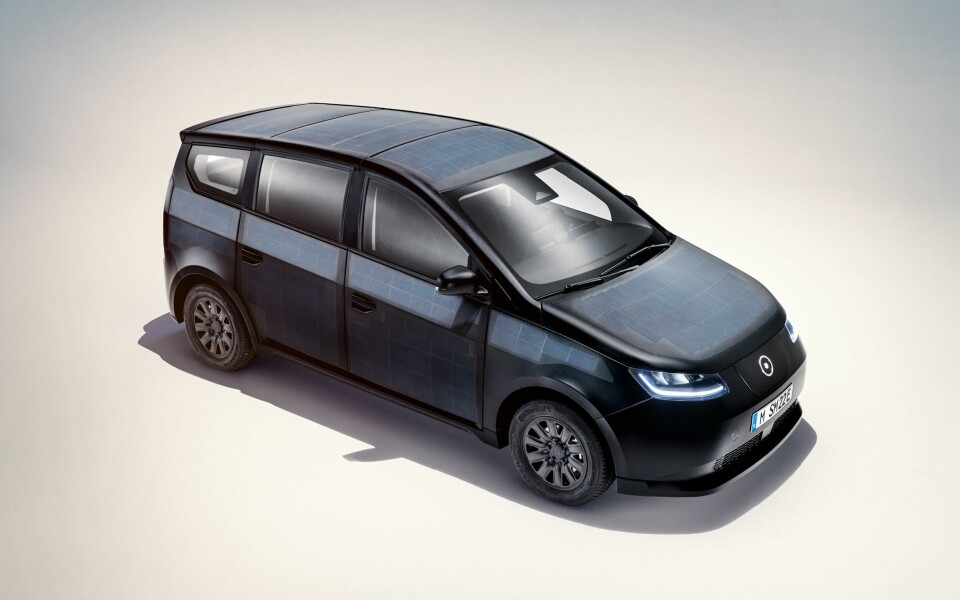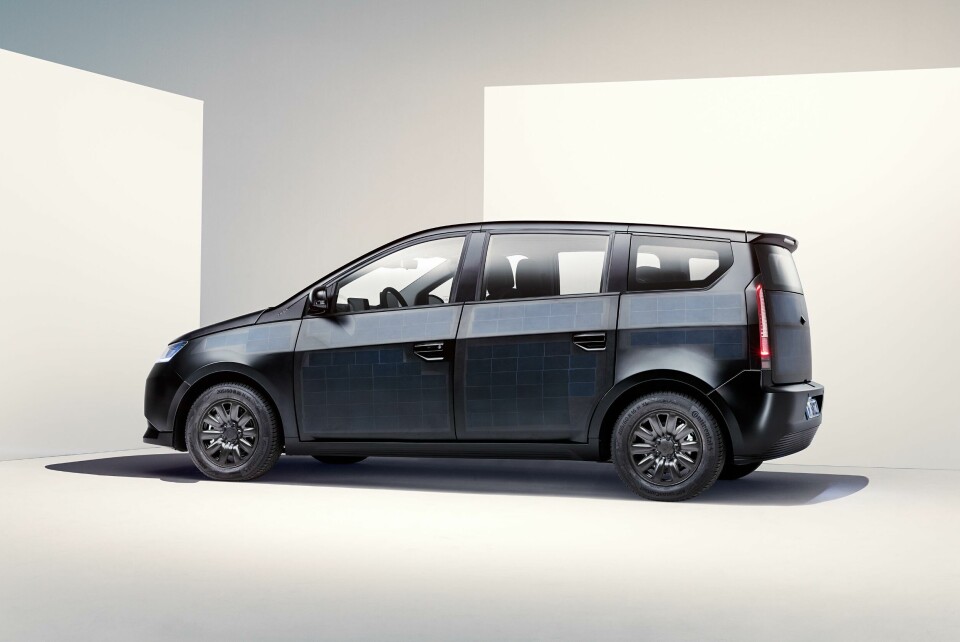
Sono Motors designer discusses solar EV
Car Design News chats with the lead designer of a forthcoming solar-powered family car about form, function and the influence of engineering on design
In October, solar-vehicle company Sono Motors embarked on a cross-country tour of the US to show off its ‘affordable’ solar EV, the Sion. The company says it already has more than 40,000 reservations and pre-orders, and the car is expected to retail at a price of US$25,000. This five-seat hatchback carries the shape of a minivan and is quite unique, with solar panels integrated directly into the body to improve its electric driving range.
First revealed as a prototype in 2017, the Sion has gradually moved closer to production readiness and was given its final design reveal in July this year. The exterior has been cleaned up, with fewer lines and smoother surfaces. At first glance, it simply looks like it has been given a matte black wrap – there is no obvious network of gloss black panels you might see on a solar roof. Mover closer and the solar panels become more obvious, particularly on the roof, bonnet and around the shoulder line.

The final design includes tweaks to the head and taillights, new door handles and a streamlined rear. As with most EVs, the front end is mostly flat save for a charging hatch and subtle air intake in the lower splitter. The headlights are now less squinty and daytime running lights add a dash of personality, but things are otherwise kept very simple. Thin vertical taillights and a subtle boot spoiler continue the theme at the back.
When it comes to creating a car, the relationship between design and engineering can sometimes come with a little friction. Designers want the vehicle to look a certain way, but in some cases that impacts the performance or feasibility of the product. A compromise needs to be made in most cases.
Functionality has always come before design
But Martin Schopka, automotive design lead at Sono Motors, explains that the design was willingly led by the demands of engineering. This is a solar car, after all, and must be designed in a way that maximises the performance of its solar system. “According to our design principle ‘form follows function’, the design of the Sion is very much geared towards functionality,” he tells CDN. “This way, we can make maximum use of the vehicle, generate the greatest possible solar yield and remain affordable at the same time.”
The design team worked “super closely” with engineering, emphasises Schopka, and although this is a product that is targeted at the mass market, aesthetics did take a back seat to ensure the vehicle performs as intended. And let’s be frank – who buys a solar car with the expectation that it will be an absolute stunner? “Functionality has always come before design, even if design also played an important role for us in certain aspects, such as the seamless integration of the solar panels in the outer skin of the vehicle or adding moss to the dashboard as a design highlight,” says Schopka.
Regardless, he believes the team found a good balance between the two worlds of form and function, and describes the updates to the production-ready model as “major enhancements.”
In theory, a solar car might benefit from being long, wide and boxy – maximising the surface area that can be used by solar panels. But Sono has managed to avoid this thanks to a novel manufacturing technique that has been honed over the course of five years and testing of around 3,000 different material stacks.
“Our technology via injection moulding enables us to adapt solar cells to more complex design requirements therefore we are not limited to rigid forms,” says Schopka. “But of course, the balance between the number of solar panels and aerodynamics is decisive as both influence energy efficiency.”
Many people ask us about the functionality of the moss on the dashboard. It is not only a central design highlight, but also a natural element that creates a pleasant ambience
Specifically, the outer shell of the Sion sports more than 450 solar ‘half-cells’ that are fully integrated. These solar cells act as a range extender for its 54kWh battery pack and can add an average of 112km in range each week (although this will obviously vary depending on weather and light conditions.)
It is not the first car to sport exterior solar panels, but it will be the first mass produced family car to do so. Most solar cars are one-off research projects or limited-run luxury models like the Lightyear One. The Genesis G80 sedan features a solar roof but not on the main body panels.
The Sion’s interior is somehow both pared back and techy, with dual screens for the instrument cluster and infotainment, mounted on a slanting IP with a terrazzo-effect panel spanning the width.
The main attraction is the wide terrarium that spans two-thirds of the dash. “Many people ask us about the functionality of the moss on the dashboard. The moss is not only a central design highlight, but also a natural element that creates a pleasant ambience.” As should be expected of a model that professes to be ‘affordable’, the rest of the cabin is a mix of anthracite plastic and textile, with a contrast light grey headlining. Schopka confirms that the moss greenhouse will make it into production.
The final design was partly driven by consumer feedback, leading to the decision to produce the Sion in only one variant to keep its price tag as low as possible. “In 2017, we asked our community to decide on the colour of the Sion,” Schopka adds. “It was an exciting race, but in the end the majority voted for black.” All going well, the Sion will be produced by contract manufacturer Valmet in Finland during the second half of 2023












